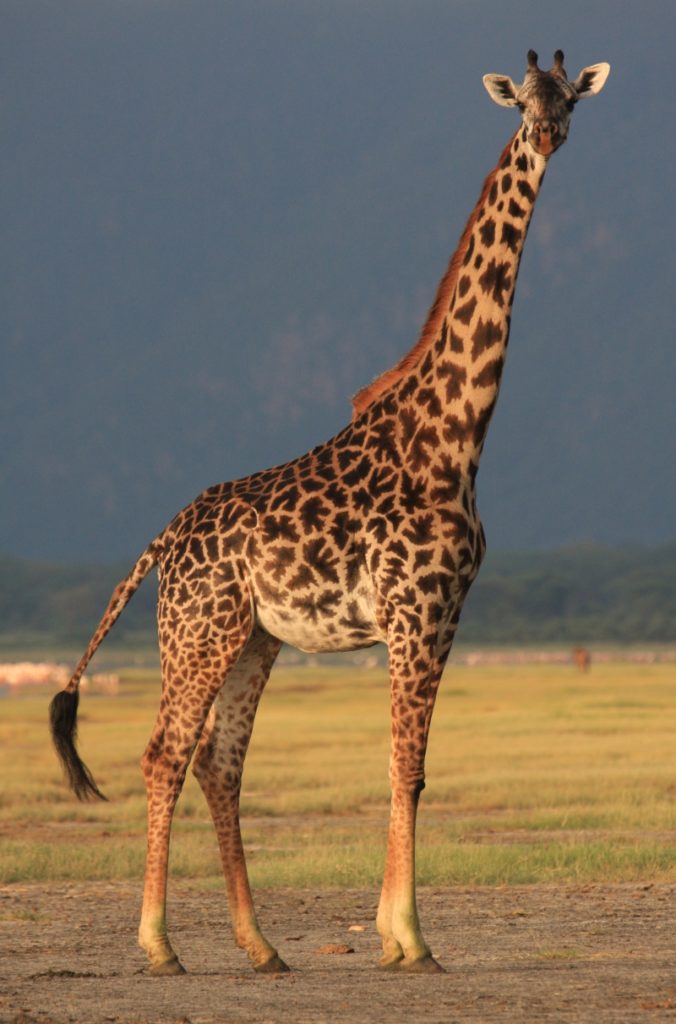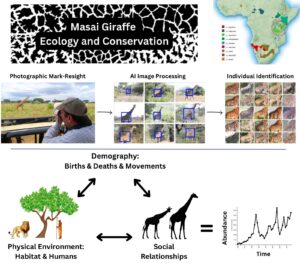 The gentle, iconic giraffe indicates the health of African savanna ecosystems, home to some of the most spectacular displays of wildlife in the world. But savanna ecosystems are in serious trouble. Habitat loss, illegal hunting, and disease are decimating savanna wildlife. Giraffe numbers have declined drastically to fewer than 100,000 across the African continent.
The gentle, iconic giraffe indicates the health of African savanna ecosystems, home to some of the most spectacular displays of wildlife in the world. But savanna ecosystems are in serious trouble. Habitat loss, illegal hunting, and disease are decimating savanna wildlife. Giraffe numbers have declined drastically to fewer than 100,000 across the African continent.
Since 2011, the Masai Giraffe Ecology and Conservation project, led by Monica Bond and Derek Lee, has been monitoring births, deaths, and movements of more than 5,000 individual giraffes in northern Tanzania. We use a special computer program that recognizes each giraffe’s unique fur pattern from photographs. Wildlife habitat is increasingly fragmented by humans and our giraffe conservation research is discovering where giraffes are doing well, where they are not, and why. We focus on Masai giraffes, a type whose numbers have decreased by 50% in recent times.
Our research objectives include quantifying the fitness consequences of social relationships and modeling population dynamics using the giraffe as a representative species for ungulate fission-fusion societies. We are testing hypotheses about which environmental and social factors as well as individual traits are correlated with demographic variation, and using this information to understand population dynamics and project populations under future global change scenarios.
Our research provides data-driven guidance for effective conservation actions in an ever more fragmented world, to ensure the future of wild giraffes. We thank the University of Zurich, Pennsylvania State University, Swiss National Science Foundation, Parrotia Stiftung, Sacramento Zoo, Columbus Zoo, Tierpark Berlin, Tulsa Zoo, Cincinnati Zoo, The Living Desert, Zoo Miami, Toronto Zoo, Como Park Zoo, Roosevelt Park Zoo, Roger Williams Park Zoo, and Save the Giraffes for financially supporting this research. We also thank Microsoft AI for Good for partnering with us to develop AI tools to analyze our Big Data. We conduct our research together with colleagues at Pennsylvania State University (USA), Estación Biológica de Doñana (Spain), and Tanzania Wildlife Research Institute, Grumeti Fund, and Nelson Mandela African Institute for Science and Technology (Tanzania).
In collaboration with:
Doug Cavener (Pennsylvania State University)

